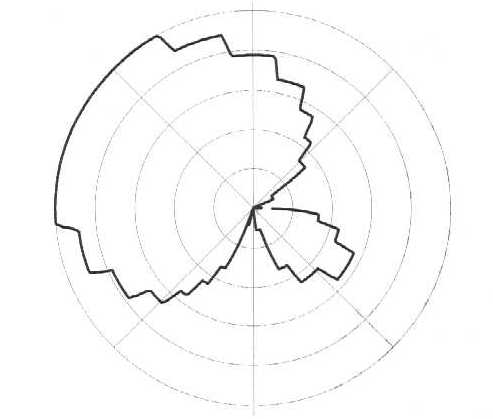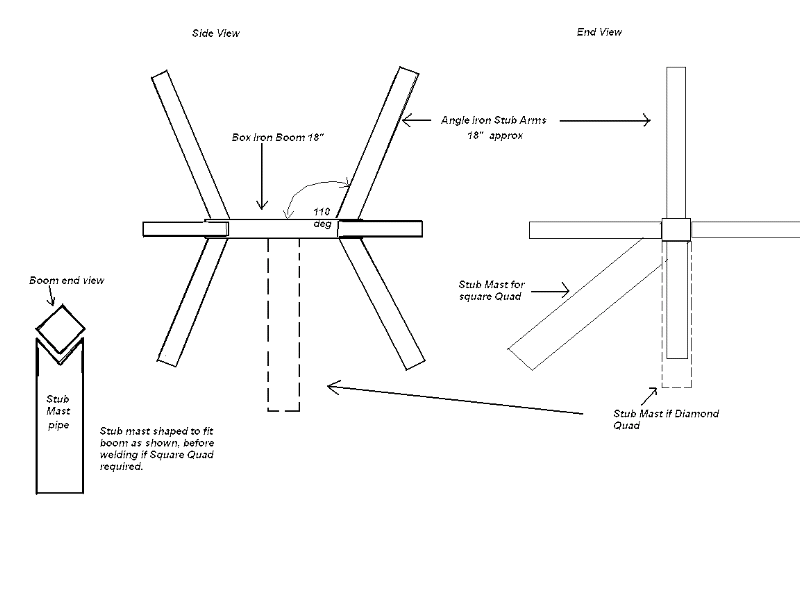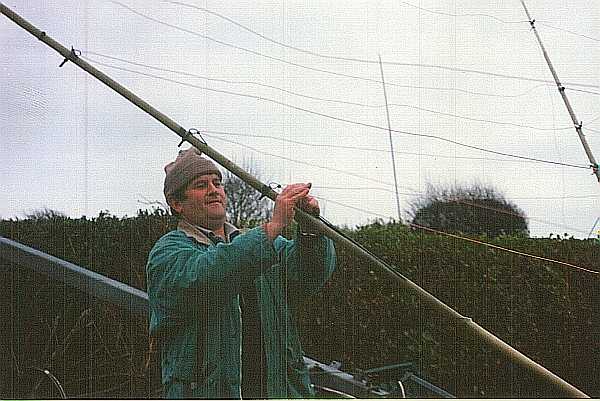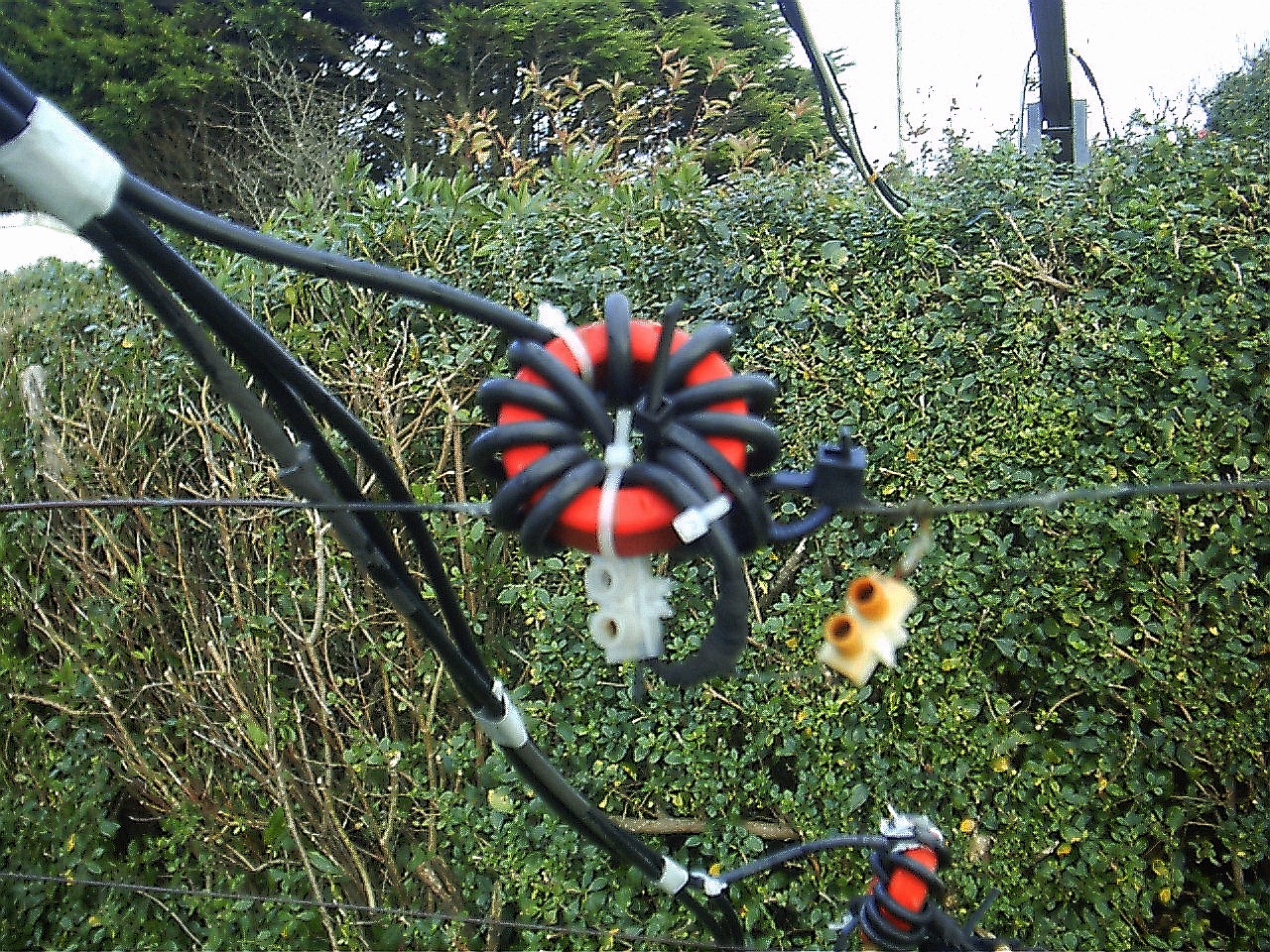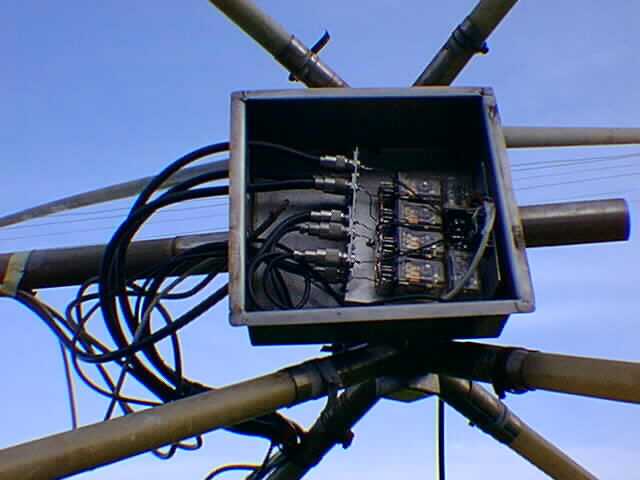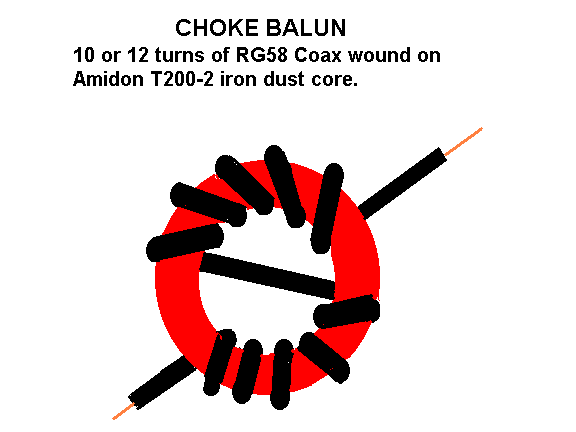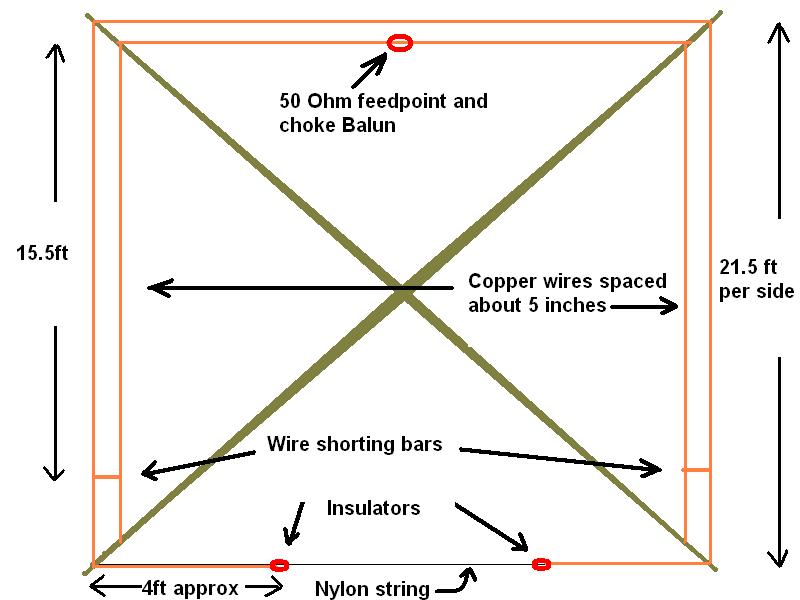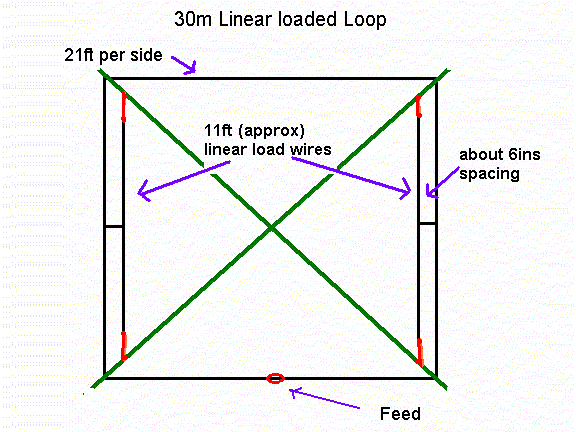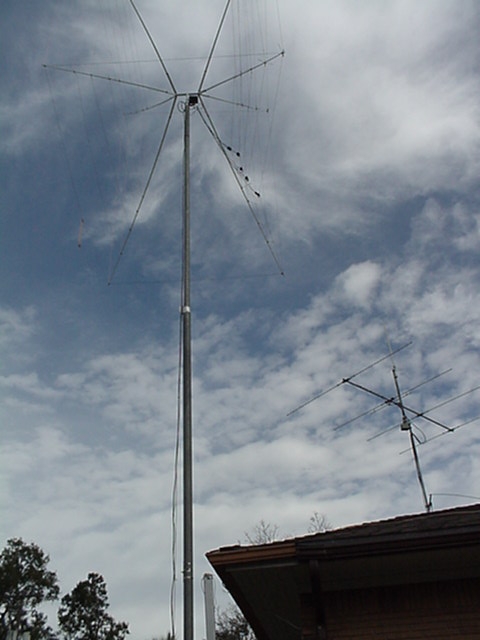Home Links Contact Information
Copyright © 1995 - 2006 John Tait All rights reserved.

EI7BA Multiband Cubical Quad
" ...A thing of beauty and a joy forever..."

I wanted an antenna that ....
1. Would not be too expensive
2. Would cover as many bands as possible.
3. Would not compromise on performance
4. Would be at least equal to a 3 El trapped commercial yagi on all bands, eg Th6
5. Could be rotated by an inexpensive rotator
6. Would withstand severe weather conditions.
7. Could be built with readily available parts.
8. Would lend it self to future modification, experimentation etc
9. Could be fed simply with a single feedline.
10. Reasonable size.
So, taking these requirements what was available.....
Well first of all, virtually all commercial antennae were ruled out on cost and/or performance considerations. I looked seriously at the possibility of building a log periodic , but ruled it out on the grounds of size and complexity. So that left the Quad!!
The Quad meets all the 10 listed requirements with a few disadvantages, these being -
1. Three dimensional, therefore visually more noticeable (more beautiful??) than a Yagi.
2. Limits the use of your tower for wire antennae (Dipoles etc.) because the quad arms hang below the rotator.
3. Prone to damage from ice (we get no ice in EI).
4. Very difficult to install on a fixed tower. A tilt over tower is very desirable, as the quad can be built onto the tower when tilted over.
( Pic of tower tilted over, so that the quad is at the other side of the hedge on the lawn.)
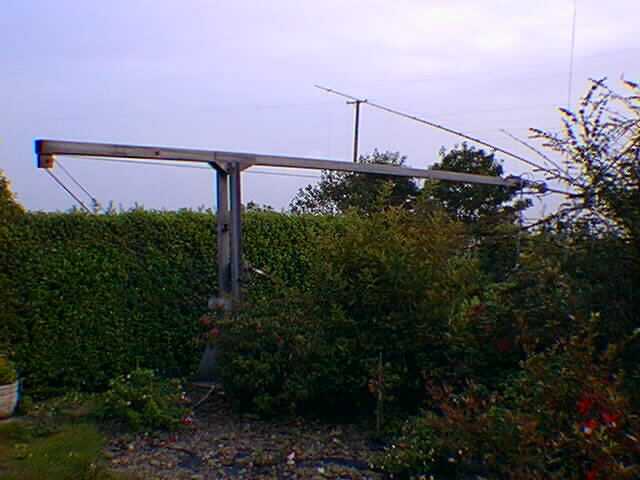
OK.. We'll start with a specification of my present Quad (2 element).
It covers six bands, 20m-10m on HF, and also 6m. It is a Boomless (spider quad, gem quad)design. It uses Glassfibre arms (a must). It uses a single coax line to a homebrew antenna switch. From there, a seperate feedline goes to each of the Driven Element feedpoints. There is a homebrew Choke Balun at each feedpoint.
Performance-
I have no accurate method to measure forward gain, but I reckon it is the text book 6-7 db.. F/B ratio is consistently 5-6 S points on my TS850 S meter, on all bands 20-10m. I don't know how many dbs per S Point for my TS 850, but it is surely at least 3db per S Point. So this translates to a minimum of 15 db, and arguably as high as 30db. As with all 2 element Quads, It has a wide beamwidth, about 60 degrees.
(Measured plot of polar diagram..15m. Using software by I0JX and TS850 to produce the plot)
Construction -
The spider was built for me by my friend Jim E18GS,(EI7M) who is an Engineer (He also built my crank up, tilt over tower). It is made of stainless steel, which of course, does not rust. The boom is about 18 inches long ( not critical), with the angle iron arms welded to the boom at an angle of 110degrees to the horizontal. The pipe, a foot long, is welded at right angles to the boom in the centre. Depending whether you weld the pipe to the flat side of the boom, or on the corner, gives you either a diamond or a square shape quad.
( Drawing of stainless steel spider)
( Pic of spider )
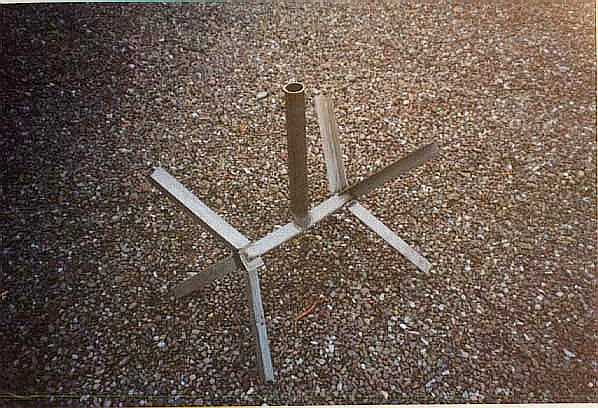
(Pic of spider mounted..First arm attached)

I use the square shape. This pipe slips into the 2 inch OD pipe which comes from my rotator, in my case the pipe to the rotator is about 5 feet long. The glassfibre arms that I use are about 16 1/2ft long, but 14 1/2ft should be long enough to accomodate the 20m loops. The arms are clamped to the angle iron arms (which are each about 1ft long) using jubilee clips (Hose clamps).
(Pic of element to spreader attachment)
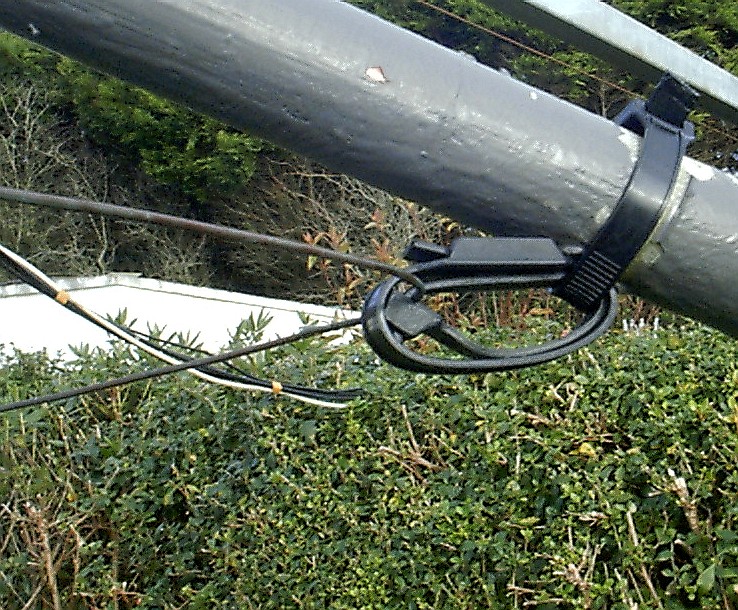
It is a good idea to put circles of insulating tape around each arm at roughly the points where the elements will be attached (see photo above). Later, when you are tensioning the loops, you have a visible check , so you can have the attachment points at equal distances from the spider.
( Attaching the elements....Ger EI8HT strutting his stuff...Known in our QTH as SUPERMAN..!!)
There are many different ways of joining the element wires to the arms. I use two strong cable ties at each attachment point. One cable tie is closed to form a circle of about one inch diameter, and the other is threaded through this and around the arm. This allows the tie point to be moved up and down the arm to tension the wires. Do not drill the arms as this weakens them. Bob K2US, uses the best method that I have seen, of attaching the elements to the arms. He puts loops of nylon webbing around the element corners, and trap the ends of the webbing against the arm using stainless steel hose clamps. This is a stronger and more durable option, but is more expensive. When the Quad is built, and everything is tuned and working OK, cut lengths of strong wire about a foot long. Bind these around the elements at the corners where they attach to the arms. This helps to stop the wire from flexing and breaking at the corners.
( Pic looking up at one of the arms. Note the circles of insulating tape, and the spiral wound reinforcing wires at the corners. Also, note how the elements are being pulled away from the arms, which improves insulation.)
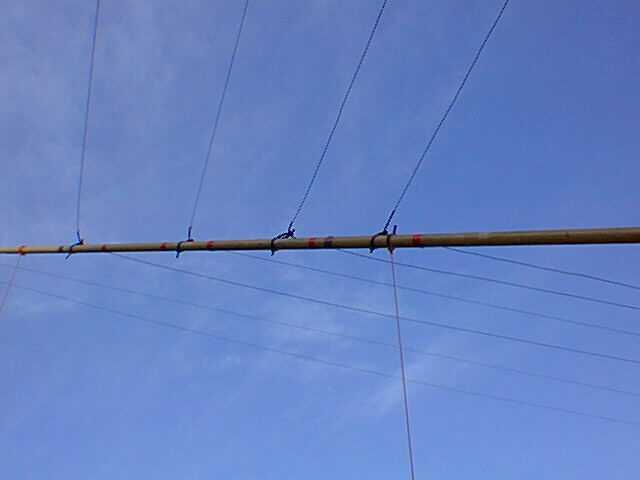
The elements-
Now for the controversial bit.....
The inherited wisdom for element size is 1005/f for the driven elements, and 4% to 5% larger for the reflectors.
The actual size of element that you end up with (usually after hours of adjusting , measuring and testing) ,will depend on a few different things, such as Type of wire, wire diameter, insulated or non insulated, etc.(In other words....The Velocity Factor)
If you use the following guidelines, and formulae, you can build this 6 band quad without tuning stubs, gamma matches or any other complexities, and it will work properly with little or no adjustment required......
The wire should be bare hard drawn copper, not less than 1mm diameter, and not more than 1.5mm diameter. (18-16swg). The formula for this type of wire is 996/f for the driven element, and 2.5% larger for the reflectors.
